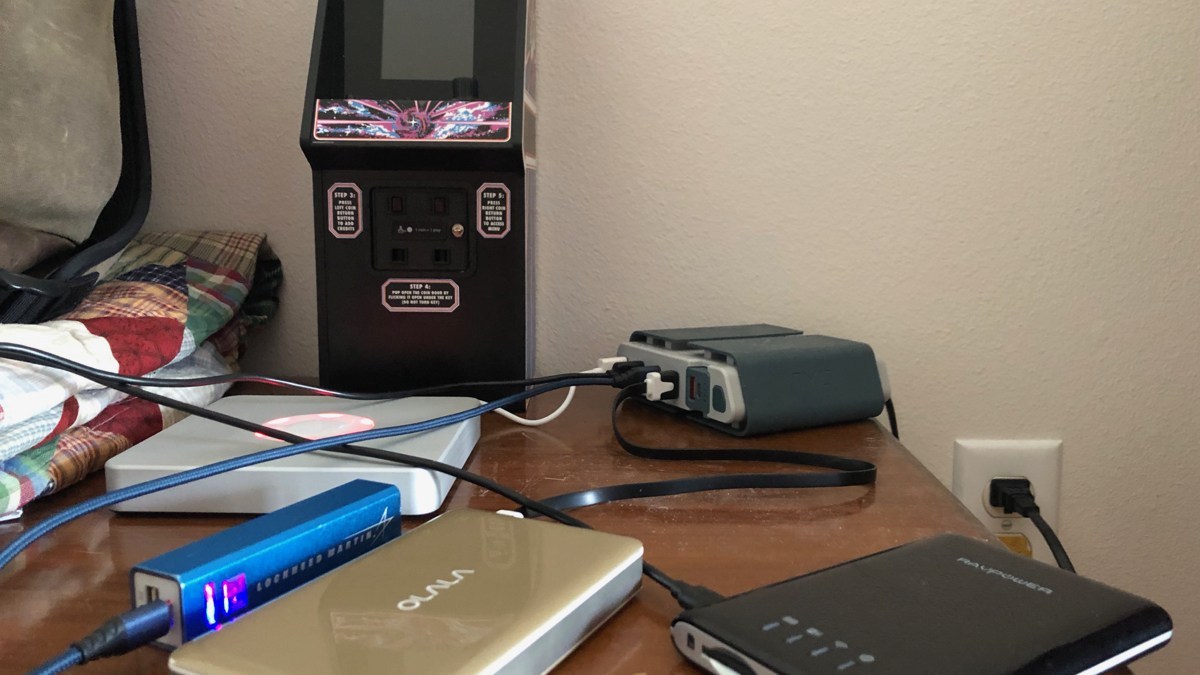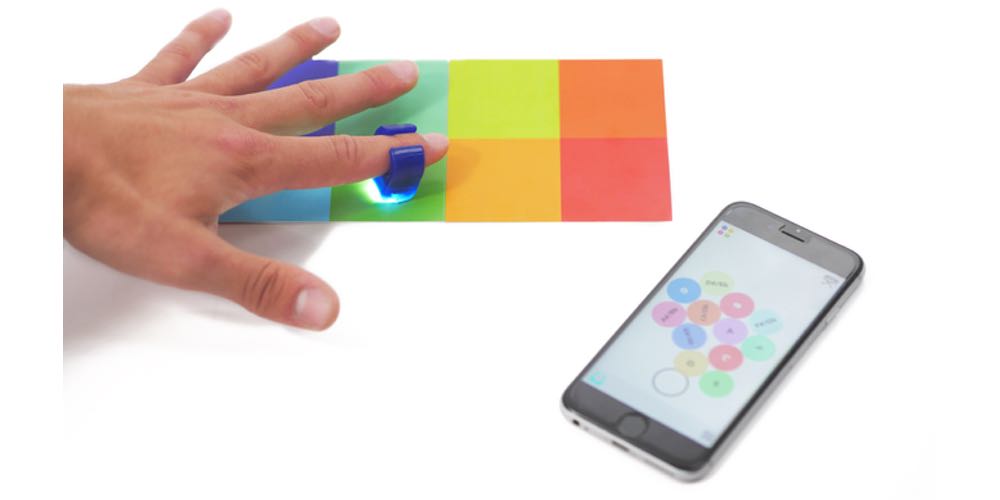
My family and I are very close to the predicted path of Dorian as are many of you who are reading this now. Even if you personally aren’t in the path of the storm, I bet you have a family member or a friend that is. In our particular neighborhood we lost power for nine days during the last storm that came through. Many people these days opt not to have landline telephone service and completely depend on cellular. This makes battery and power management even more critical. So how do you best prepare to be without power, potentially for weeks, and still ensure you have at least one cell phone on for emergency communications? I’m sharing below what my family is doing (and we all own iPhones) but most of this can be applied to other cell phones as well (you will just have to translate the setting differences).
Batteries, Batteries, Batteries
The first step is to identify every battery source in your home that can be used to power your cell phones. You probably have more of these than you might think. Here are just a few to consider:
- Laptops (can charge phones via USB)
- Apple Watch chargers with built in batteries
- Travel hubs and photo card reading devices
- Portable USB battery chargers
- Car parking mode dash camera backup battery packs
- New iPad Pros can charge iPhones (but you need an Apple USB-C to lightning cable to do it)
- Nintendo Switch and other portable gaming backup chargers
In our case, we have four laptops (two work laptops and two home laptops). Use the USB-A or USB-C ports on that laptop to charge up your cell phone, but when you do make sure you have everything on your laptop turned off (wi-fi, Bluetooth, notifications, sound) so you essentially turn you laptop into a giant battery to keep you cell phones alive.
Between my daughter and I, we have two Apple Watch chargers that contain internal batteries so that we can charge our Apple Watches on the go or anywhere in the house. Charge these up if you have them, and instead of charging your Apple Watch use them to charge up your cell phones instead.
I had several travel-related hubs that were primarily used as microSD card readers or wi-fi hotspots for hotel rooms for use while on travel, but many of these devices also contain batteries and can be used to charge cell phones.

My iPad wireless hub (called a DoBox) is something I reviewed here on GeekDad a while back. The DoBox is a double-win for us. For one it can be used purely as a battery for cell phones. As a bonus I can use the DoBox as a way to take power from my iPad Pro and use it charge cell phones. You see, I don’t own an Apple USB-C to lightning cable so I can’t take advantage of the new iPad Pro’s capability to charge an iPhone, but I can use the iPad Pro to keep the DoBox charged up and then use the DoBox to charge cell phones. Think outside the box when it comes to utilizing every last battery in your house to keep your cell phones powered!
Everyone has probably picked up a small travel charger at one point in time or grabbed one from a company that was giving them away. Scour the house and charge up every last one of them. Another potential source of power can be your car (and, no, I do not recommend running your car to charge your cell phone). One of our cars has a front and rear dash cam setup and it needs battery power in order to keep those cameras rolling when the car is off and parked. So in our case we can simply take that battery out of said car and use it to charge our cell phones (it has two USB ports you can use to charge your cell phone with). Just make sure you remember to remove that battery right after driving so your car doesn’t use the battery for the cameras while parked… save it for your cell phones).
Power Management on Your Cell Phones
What follows is advice specifically for iPhones but many of these tips can be applied to any smartphone. The first step is to put your iPhone into “Low Power Mode.” This is a mode that your iPhone will prompt you to put the phone into once your battery reaches 20% or less, but you can also manually put it into this mode at any time. Go into “Settings” and then select “Battery” and switch “Low Power Mode” so the switch/toggle is colored green. The battery indicator in the upper right of your iPhone screen that is normally black and white will now be colored yellow to indicate you are in this mode. Low Power Mode is for iOS 11 and newer, so this is not available on all iPhones depending on the iOS version you are running.

You can read up about this mode on Apple’s support page, but this essentially turns off a lot of the background app refresh and mail fetching, reduces screen brightness, makes the phone screen lock more quickly and several other things that extend your battery power. You will definitely notice your iPhone will run slower and some UI animations may be different, but the end result is all worth it.
But going into “Low Power Mode” isn’t all you can do, especially in the situation of being in a hurricane recovery area. Go into your settings and do the following:
- Turn off wi-fi
- Turn off Bluetooth
- Turn off “Location Services”
- Turn off haptics (vibrate)
- Turn off Fitness Tracking
- Put your iPhone into Do Not Disturb mode (but see my caution about this below)
If you are without power, you most likely don’t need wi-fi. I also suggest turning off Bluetooth as you should avoid using your cell phone for phone calls and for listening to music so you shouldn’t need your wireless headphones. Rely on text messages to keep in communication with family and friends (the cell networks become congested so only use voice calling if you absolutely need to). Location services is something you should disable, but with a word of warning. Friends and family will no longer be able to track your location using Find My Friends. That is probably okay since you probably notified them where you would be during the storm anyway, but keep that in mind. Also, some local emergency systems may use location services to help locate where the caller is calling from, but in general you should always tell emergency services where you are located and not assume they can figure it out. Turning off location services will keep your phone from trying to figure out your location when using apps and going to websites and will save on power (as it will likely try to use GPS since you probably won’t have a wi-fi source for it to use). To do this, go into “Settings” and then “Privacy” and then in the “Privacy” menu select the first option in the list and turn location services off. Fitness tracking is also a background function you can most likely live without temporarily (unless you have a specific medical condition you are monitoring).

The last recommendation is to put your iPhone into Do Not Disturb mode, but should only be used if you have set up a contact list of everyone who might want to get ahold of you. That way you can allow calls and texts from contacts in a specific contact list to automatically bypass this mode. As long as you check your iPhone screen for missed texts and calls on a regular basis it is worth the battery savings, and with regular checks you can ensure you don’t miss an important message or call from someone not on that contact list. Just make sure within the “Do Not Disturb” menu that you have a contact list selected for contacts that are allowed to bypass this setting. If you don’t want to do this, then I suggest going into “Settings” and then “Notifications” and turn off all notifications except those related to communication, weather, and emergency services. Otherwise your iPhone screen will light up and potentially buzz and make sound each time one of these apps thinks it needs to tell you about something.

Call and Text Forwarding
This one may be the most important tip of all. Keep the number of cell phones turned on in your family to a minimum. There is a way you can do this and not sacrifice communications. First off, you can forward all of your phone calls from one family member’s iPhone to another. If you do this with several iPhones then you can get away with just one or two iPhones you have to keep powered on at any given time. To forward your iPhone calls to another phone, go into “Settings” and then “Phone” and about 3/4 down the page there is an option for “Call Forwarding.” Enter in another family member’s cell phone number and then shut down your iPhone. All your calls will now go to that family member’s iPhone.

Text messages are a little bit trickier. If you are trying to take a family of iPhones down to a single iPhone, call forwarding will take care of phone calls but what about text messages? Regular SMS texts (non-iMessage texts) are difficult as there is no good way to forward SMS texts to another device, but if you know that everyone you want to keep in touch with uses iMessage, you can forward your phone calls to another family member’s iPhone. You can then use that other iPhone’s web browser to login to your iCloud account and check your iMessages via web browser from time to time. That will let you power down that iPhone and save it to use as a family phone if you were to run out of all backup battery power and run out of power on all other family member’s iPhones.
Don’t Forget!
The final tip for this battery saving strategy is to make sure you come back to this article once the storm has passed and you have power and reverse all of these settings. There is a lot to try to remember, so I highly suggest just referring back to this article to help remind you what you need to set back to your normal settings. And, of course, most importantly keep your family safe. Let your family and friends know ahead of time that you could be without power for an extended period of time, let them know where you will be and that the best way to contact you is via text message (ideally iMessage so you can reduce the number of iPhones on at any one time).




